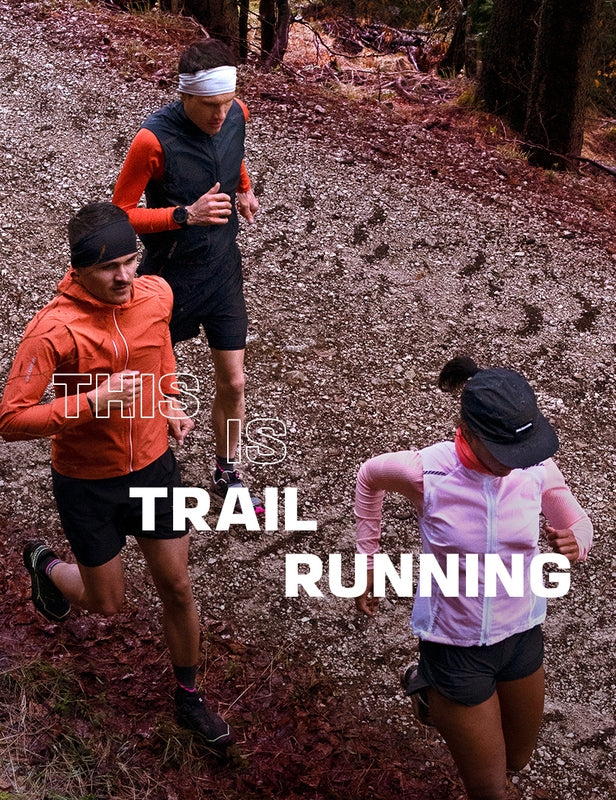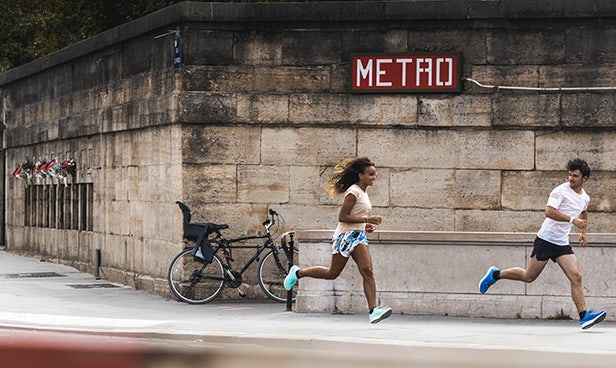Are you a runner with the goal of running a half marathon? Here’s how to systematically prepare for this event based on a precise eight-week training plan.
WHAT IS A HALF MARATHON?
A half marathon is a 21.1-kilometer road running event that is half the distance of a marathon.
Although not an Olympic event, the half marathon is on the program at major track and field events like the World Athletics Championships which takes place every two years. It’s also a very popular event with amateur runners.
Indeed, while the 10km is often a new runner’s first race, the half marathon often becomes a goal for more experienced runners who are interested in a longer race that is more serious yet still manageable.
The half marathon’s distance of 21km has the advantage of being less demanding on the body than a marathon in terms of muscle fatigue. For the majority of runners, the half marathon is run at a comfortable speed, with little shortness of breath and therefore, a little buildup of lactic acid in the muscles as is the case over shorter and faster distances.
Thanks to this, the training for a half marathon is less demanding than that of a marathon or an ultra-trail but still requires some planning for efficient, quality performance.
Our running shoes for men | Our running shoes for women


TRAINING FOR A HALF MARATHON: PREREQUISITES
Deciding to train for a half marathon is generally an indication that you already have some previous background in sports. However, if you’re starting from scratch you should first make sure you meet the following prerequisites before you start your training.
Have a basic level of endurance
Running or practicing another endurance sport regularly for at least a year will provide a good basic fitness level that’s needed to start training for a half marathon. Don’t start training for a half marathon without having at least a minimum level of fitness. By doing so you’ll risk overtraining or injury because your body is not yet adapted for it. Read our article on how to prevent running injuries.
Know your MAS and MHR
MAS stands for Maximum Aerobic Speed. In other words, it is the maximum speed at which you can run for three to six minutes depending on your physical conditioning.
You should test your MAS a minimum of once a year:
- by doing a stress test in a lab
- by testing yourself or getting tested at a gym
There are several ways to find your own MAS. The half Cooper test is often used because it is simple and effective:
- Warm-up for 20 to 30 minutes
- Run the farthest you can in six minutes, ideally on a running track or a smooth, flat course
- Your MAS equals distance run in meters divided by 100. For example, if you run 1500 meters in six minutes, your MAS is 15km/h (1500m/100 = 15km/h)
Knowing your MAS helps you adapt your race training schedule based on your goals and your physical abilities. During workouts that involve interval training, you’ll need to run at a high intensity (from 85% to 100% of your MAS), depending on your goal. When running a half marathon, you’ll typically be running at 70% to 85% of your MAS.
During your MAS test, you’ll also be able to determine your maximum heart rate or MHR. Another good way to manage your effort during a race is to base your effort on a percentage of MHR. To do this, you’ll need to use a watch equipped with a heart rate monitor.
Our running shoes for men | Our running shoes for women
Complete a 10km race
Completing a 10km race will give you the basics needed for running a longer race like a half marathon. Being familiar with how a running event unfolds will also provide some benchmarks you can use when running your first half marathon.
If you want to know how to prepare for a 10km race, take a look at our How to train for a 10km race.
Make sure you have the right gear
As with all running events, the equipment needed for a half marathon is pretty simple and can be summed up like this:
- a pair of running shoes made specifically for your style of running and your body type (read our article “How to choose your running shoes”).
- a pair of high-quality socks, essential for your comfort
- comfortable running clothes adapted to the day’s weather
- a cardio sports watch that will allow you to track your training sessions and monitor your running pace

OUR HALF-MARATHON TRAINING PLAN
Do you have the recommended prerequisites to run 21kilometers? If so, you can now start preparing specifically for your half marathon by following our training plan.
This is an eight-week training plan that includes three or four, one- to two-hour sessions per week. It’s a program that’s suitable for runners who are new to half marathons as well as those who wish to improve their performance in this event. By following this plan, you should be able to run your half marathon at a pace that’s 80 to 85% of your MAS.
Our running shoes for men | Our running shoes for women
Our training plan includes two interval training sessions per week preceded by a 20- to 25-minute warmup. The idea behind interval training is to alternate short periods of fast running with a recovery period not exceeding two minutes. This will keep your heart rate at a higher rate for longer than during continuous high-paced running. These interval training sessions will result in efficient progress on a cardio, muscular, physiological, and technical level.
Each week also includes a recovery session of slow-speed jogging or if you wish, cycling.
Finally, the last session of each week is a recovery workout at a moderate pace. This workout can be on the bike if you want to throw in some variety.
Depending on your goals, your physical condition, and the time you have available, you can adapt this training plan by, for example, increasing the duration of the sessions. But be careful not to overdo it. Listen to your body and don’t underestimate the importance of recovery.
The half marathon is a challenge that’s accessible to regular runners who wish to test themselves and their progression over 21 kilometers. If this distance saves your legs from the infamous “30km wall” that marathoners know so well, it’s still a race to be taken seriously by doing the training needed to get yourself across the finish line with a smile!



